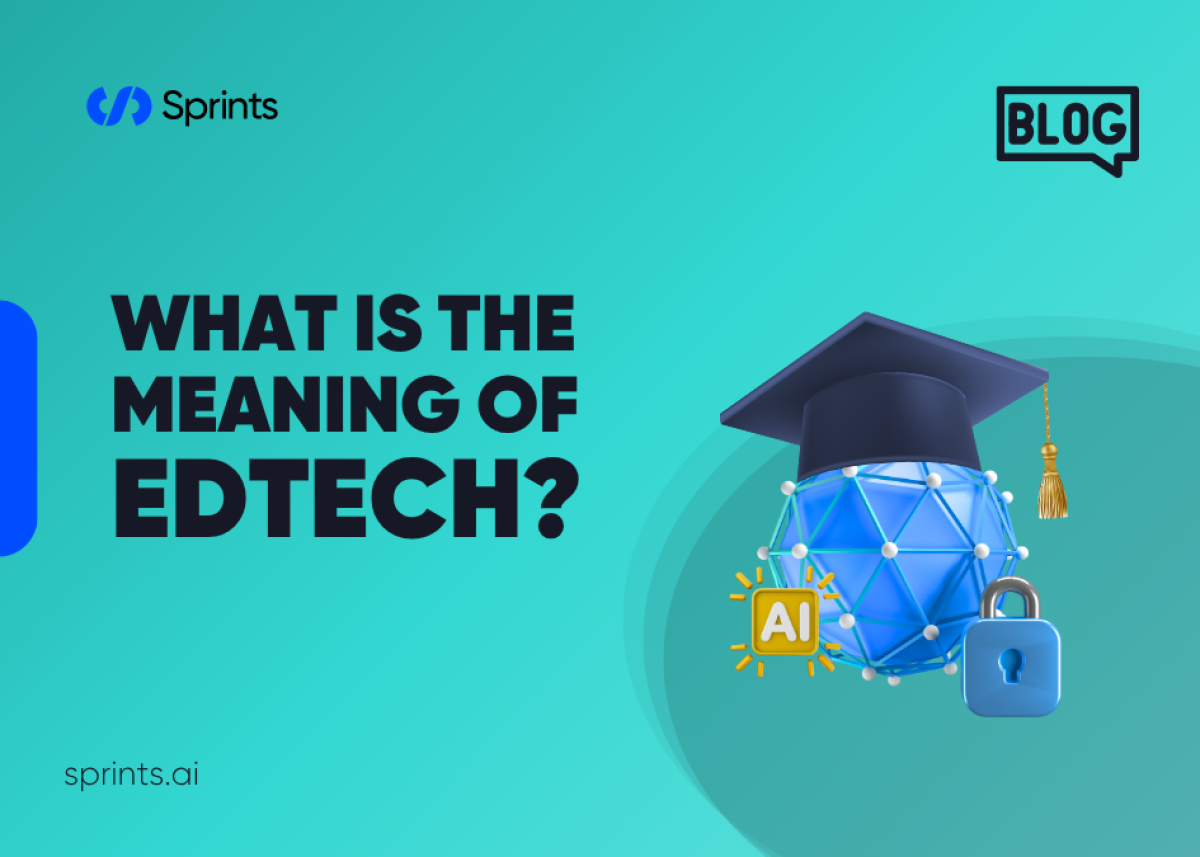
You've probably heard the term Edtech buzzing around lately, maybe in conversations about schools, online learning, or educational apps. But what exactly does Edtech mean, and why does it matter? In simple terms, Edtech, short for Educational Technology, blends education and technology to improve teaching and learning experiences.
In this article, we’ll explore exactly what Edtech is, highlight why it's essential today, and provide practical examples and advice you can apply right away. Whether you're a student, teacher, or parent, understanding Edtech can empower you to make the most of modern learning tools like online courses, educational apps, and virtual classrooms.
What Does Edtech Really Mean?
Simply put, Edtech is the use of digital tools—like educational apps, online platforms, and virtual classrooms—to enhance education. Think of Edtech as bringing learning into the 21st century, combining technology with traditional methods to make education more accessible, interactive, and engaging.
Edtech covers things like:
- Online learning courses (eLearning)
- Educational mobile apps
- Interactive digital resources
- Virtual classrooms and meetings
Why Edtech Matters Today
Edtech isn’t just a trend—it’s shaping how students and teachers interact. Here’s why it matters:
Making Learning Accessible to Everyone
One of the biggest benefits of Edtech in schools is that it levels the playing field. With online learning platforms, students can access quality educational content no matter where they live. Students in remote areas can attend virtual classrooms, bridging gaps in educational equality.
Personalized Learning Experiences
Everyone learns differently. Edtech tools, such as educational apps, enable students to study at their own pace. Whether students need extra help or want to move ahead, Edtech adapts to their unique learning styles, boosting confidence and performance.
Better Collaboration and Communication
Virtual classrooms are not just digital lecture halls—they are interactive communities. Edtech tools encourage collaboration among students and teachers, allowing for seamless group work, discussions, and even real-time feedback.
Edtech Trends to Watch in 2024
Edtech is always evolving. Keeping up with the latest trends can help educators and learners benefit from new tools and techniques.
Artificial Intelligence (AI) is Transforming Education
AI-powered tools can analyze how students learn, offer personalized feedback, and even predict where students might struggle. AI-driven grading tools and interactive chatbots are quickly becoming some of the best Edtech tools for teachers.
Virtual and Augmented Reality (VR/AR)
Imagine taking your history class on a virtual tour of ancient Rome or exploring marine life without leaving your classroom. VR and AR technology make learning incredibly immersive, transforming ordinary lessons into exciting adventures.
Gamified Learning
Educational apps are increasingly using gamification—turning lessons into engaging games. Apps like Duolingo or Kahoot make learning feel less like studying and more like playing, helping students stay motivated.
How Does Edtech Improve Learning?
If you're wondering, "How does Edtech improve learning?", here are a few concrete examples:
More Interactive Lessons
Edtech tools turn traditional teaching methods into dynamic experiences. Interactive quizzes, polls, and videos keep students interested and participating.
Immediate Feedback and Assessments
With platforms like Google Classroom or Edmodo, students receive instant feedback on assignments. This immediate insight helps them understand mistakes quickly, improving learning efficiency.
Flexible and Independent Learning
Online courses through platforms like Coursera and Khan Academy allow students to learn at their own pace, revisit materials as often as needed, and manage their schedules flexibly.
Best Edtech Tools for Teachers: Real-Life Examples
Teachers looking to enhance their classrooms have plenty of excellent tools to choose from:
- Google Classroom: Simplifies assignments, grading, and communication with students.
- Edpuzzle: Turns regular video content into interactive lessons with built-in questions and assessments.
- Padlet: Acts like an online bulletin board, where students can post ideas, resources, and collaborate on group projects.
Challenges of Adopting Edtech (and How to Overcome Them)
While Edtech offers many benefits, it does come with challenges. Here are common issues and practical solutions:
Technical Problems
Not everyone is comfortable with technology, and technical difficulties are common. To manage this:
- Provide training and support for teachers and students.
- Always have a backup plan, like offline resources, in case technology fails.
Unequal Access (Digital Divide)
Not all students have equal access to devices and internet connectivity. Solutions include:
- Initiatives providing affordable devices and internet access.
- Schools offering shared resources and labs.
Resistance to Change
Teachers might hesitate to adopt new technology. Here's how to help:
- Introduce tools slowly and offer regular professional development.
- Encourage feedback from teachers and students to ensure the tools fit their needs.
Practical Tips for Integrating Edtech into Classrooms
Here’s straightforward advice to successfully bring Edtech into your classroom:
- Start Small: Pick one or two new tools to test out first.
- Get Training: Attend workshops, webinars, or seek help from tech-savvy colleagues.
- Regularly Review: Evaluate if the tools are working effectively, and adjust your approach accordingly.
Edtech Examples for Classrooms in Real Life
Check out these practical classroom scenarios:
- Flipped Classroom: Teachers record video lessons students watch at home. Classroom time is then dedicated to interactive discussions and hands-on activities.
- Project-Based Learning (PBL): Students use collaboration tools like Trello or Google Drive to work together on projects, improving communication and teamwork skills.
What’s Next for Edtech?
The future of Edtech looks bright. Expect to see:
- More adaptive learning platforms respond directly to student needs.
- Increased use of advanced immersive tech like holographic lessons.
- Greater reliance on data analytics to improve teaching and learning strategies.
Conclusion: Why You Should Embrace Edtech
Understanding Edtech means appreciating its role in making learning more effective, engaging, and inclusive. Whether you're a teacher wanting the best Edtech tools, a student exploring new educational apps, or a parent supporting your child's learning, Edtech offers something valuable for everyone.
Stay informed about Edtech trends in 2025 and beyond. By embracing technology in education, you’re not just keeping pace you're paving the way for smarter, more personalized, and engaging learning experiences.



